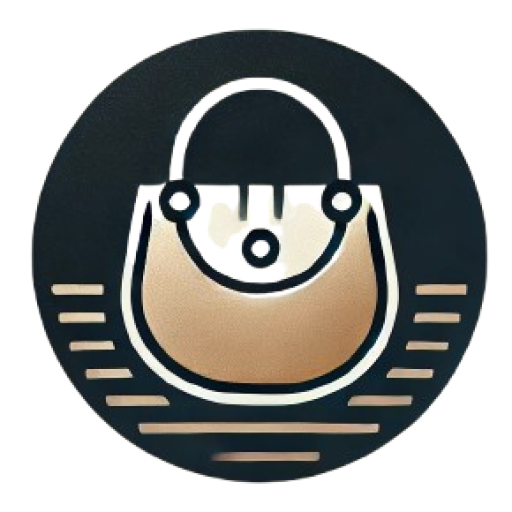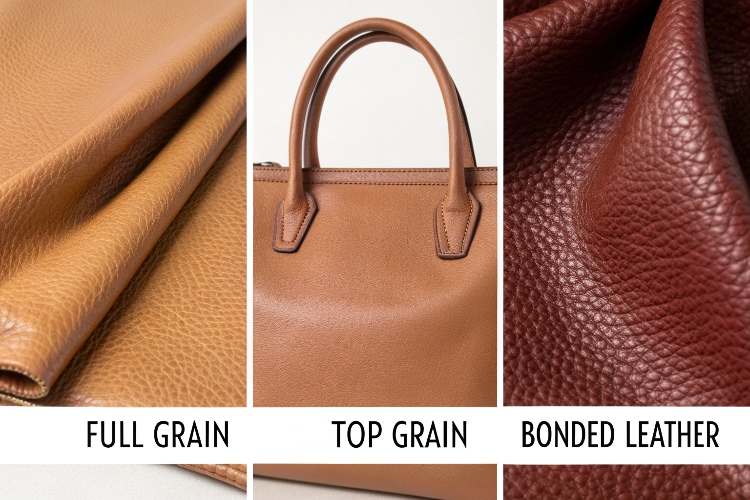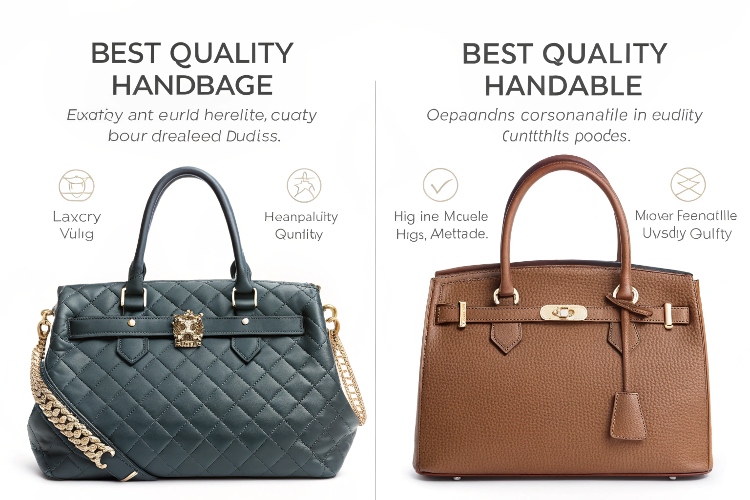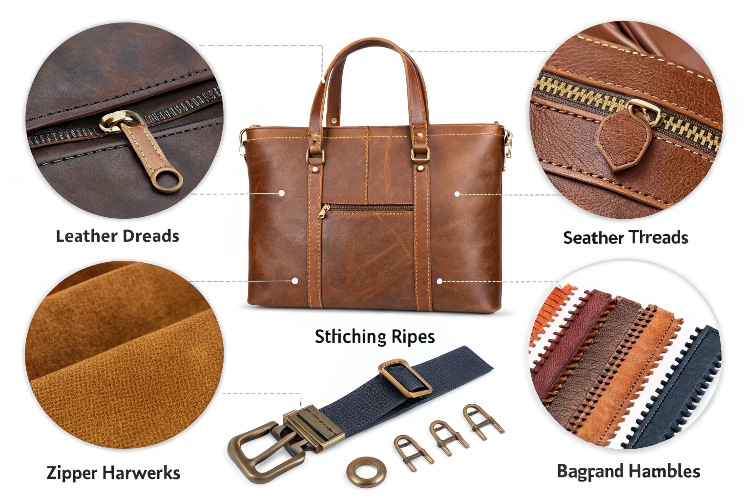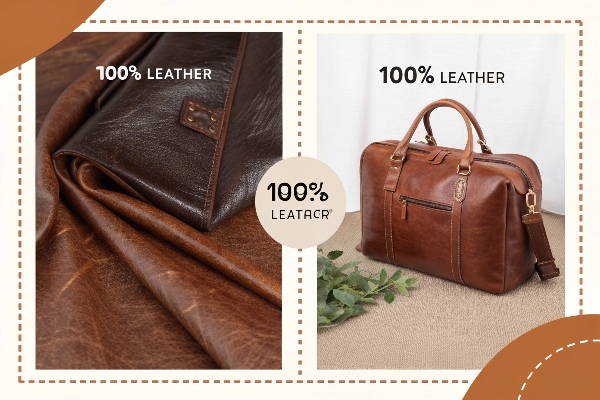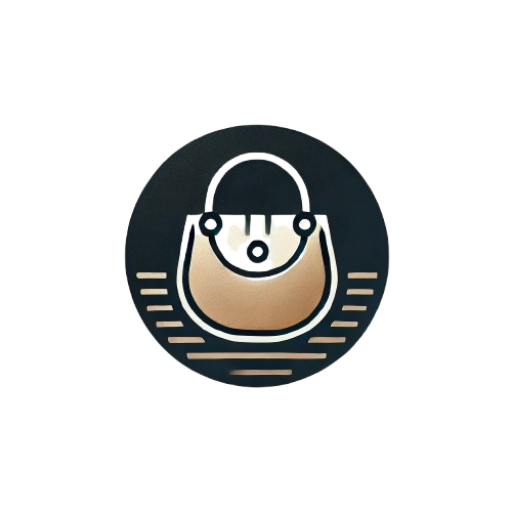Yes, most designer bags are factory-made, with key nuances:
Production Reality
• 90%+ of luxury bags (LV, Gucci) use automated European factories for core processes like laser-cutting (0.1mm precision at LV’s Spain plant).
• Handwork focuses on premium details: Hermès artisans require 200+ hours of training for crocodile leather edges.
Quality Insights
• Factory ≠ inferior: Gucci’s AI quality control achieves 0.8% defect rates (Bain & Co).
• True craftsmanship markers: 72-hour salt spray tests for hardware, not vague “handmade” labels.
Consumer Guidance
• Verify RDS-certified leather and Ecovadis-rated factories over marketing terms.
• Hybrid models dominate: Hermès uses robots for leather pretreatment; Coach employs ex-luxury artisans for “hand-finished” lines.
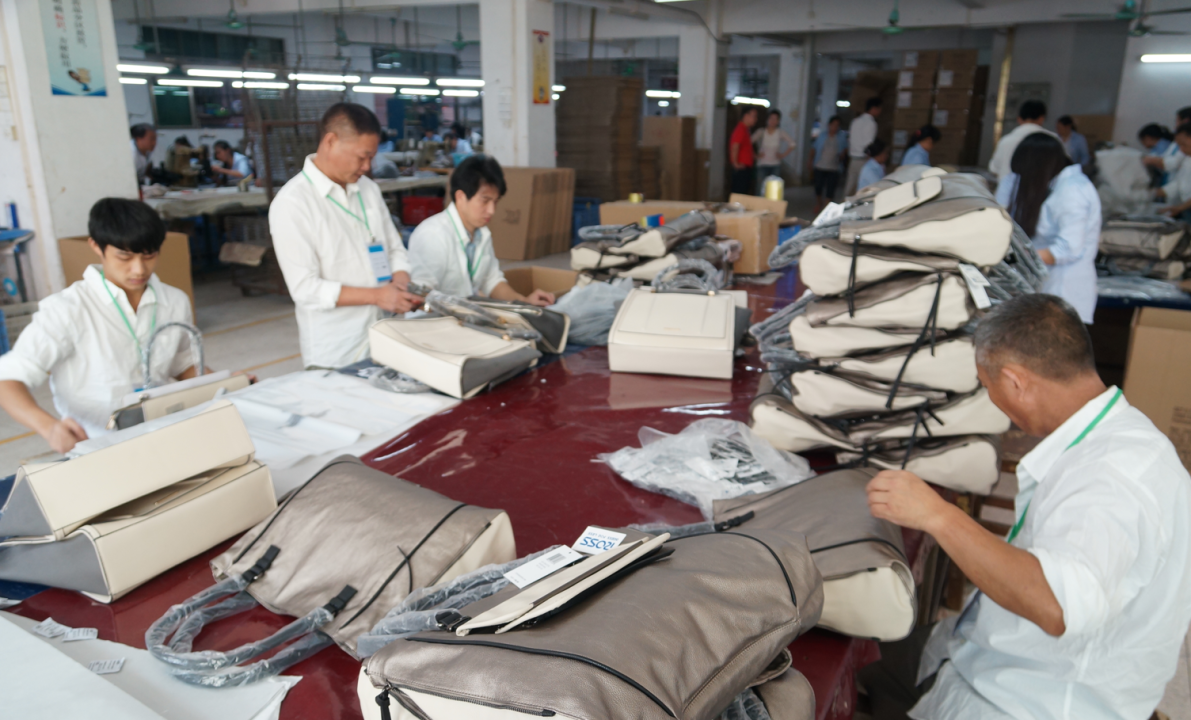
Analysis of Luxury Production Models (Artisan Workshops vs. Assembly Lines)
Artisan Workshops: True Limited Edition or Marketing Jargon?
Carrying a bag labeled “handmade,” do you imagine artisans stitching in French countryside cottages? Reality is more complex. Hermès Birkin bags are indeed handcrafted in workshops near Paris, but each bag is created start-to-finish by a single artisan, requiring 18-24 hours of work with strict standards on stitch angles. With only 40+ global workshops producing under 120,000 pieces annually, this constitutes true scarcity.
Don’t be fooled by “handmade” claims. A 2018 New York Times exposé revealed an Italian brand’s scheme: factory-made semi-finished products shipped to Spanish villages for workers to manually attach buttons, then labeled “handcrafted.” The EU still has no legal definition of “handmade,” relying entirely on brand self-regulation.
Assembly Lines: The Secret Workshops of Luxury Empires
Louis Vuitton’s Neverfull tote production line would thrill engineers. At its Asnières factory, laser cutters trim canvas with 0.1-second precision, five machines simultaneously stamp logos, but handle stitching remains manual – machines still can’t replicate human fingers’ ability to adjust leather tension. This semi-automated model enables million-unit annual production while maintaining under 1mm margin of error.
Wilder operations exist in Eastern Europe. Bulgarian leather workshops producing inner liners for a top luxury brand pay workers €4.20 hourly (1/3 of Paris’ minimum wage). Finished in Italy, these wallets sell at 20x markup. Brands deny these “shadow factories,” but EU customs data exposes the truth – Romania alone exported €370 million worth of “unfinished luxury components” in 2022.
Hybrid Models Are Conquering the Market
Chanel’s 19 bag employs modular production: German factories cast metal chains, French workshops quilt diamond patterns, Italian facilities handle final assembly. This “global manufacturing, local assembly” approach satisfies mass production while legally qualifying for “Made in France” labels – French customs require only 51% local production value.
Gucci’s 2019 Off The Grid series executed bolder moves: Vietnamese factories weave canvas, Tuscan workshops apply distressed finishes, Milan designers conduct quality control. Combining eco-materials, third-world production, and Italian “hand-finishing,” this hybrid model hits Gen Z’s ethical consumption sweet spot while pricing 30% below full-handcrafted items.
Manufacturing Strategies Across Brands (Hermès Handcrafted vs. Coach Industrialized)
When Handcrafting Becomes the Soul of Luxury
If you’ve touched a Hermès Birkin bag, you might notice its stitching patterns are as unique as fingerprints. This isn’t something machines can replicate. At Hermès workshops near Paris, apprentices undergo three years of training before qualifying to handle crocodile leather—they must first practice sewing for over 200 hours using regular cowhide. A little-known fact: the brand’s annual production of handcrafted bags can’t even match some fast-fashion brands’ weekly output.
The documentary Craftsmanship captured the reality: master artisans strain their hand veins while piercing six layers of leather with custom-made awls. This “self-torturing craftsmanship” directly impacts the secondary market—a 2017 auctioned Himalayan Birkin sold for $380,000, with buyers valuing the story behind every human-made crease.
Precision Art on Assembly Lines
Now look at New York’s Coach factory, where laser cutters process leather with 0.01mm precision—equivalent to one-tenth of a human hair’s diameter. Assembly line workers wear anti-static gloves, rotating shifts every 45 minutes to maintain focus. What you might not know: Coach digitized production in 2014, with each bag now “born” carrying a QR code for full traceability from cutting to quality checks.
Industrialization doesn’t mean compromise. Coach’s tote bags undergo 12 tension tests, including simulations of violently shaking 15-pound loads 500 times. The cost of standardization: their Florida factory produces 3,000 bags daily, yet can never replicate Hermès’ “imperfect” delicate wrinkles.
What Are Consumers Really Buying?
A New York University Luxury Research Center survey reveals insights: 73% of Hermès buyers admit they know machine substitution could improve certain processes, but specifically want “the warmth of human imperfection.” Meanwhile, 68% of Coach customers prioritize “getting $800 quality that survives repeated subway security scanner friction.”
Yet changes are emerging. Hermès quietly opened a semi-automatic experimental workshop in Lyon in 2022, using robots for leather pretreatment. Conversely, Coach invested heavily in a New York handcrafted workshop series, employing retired artisans to train apprentices. It’s like Michelin-starred restaurants adopting food processors while fast-food chains focus on plating—the survival rules of luxury always prove more cunning than imagined.
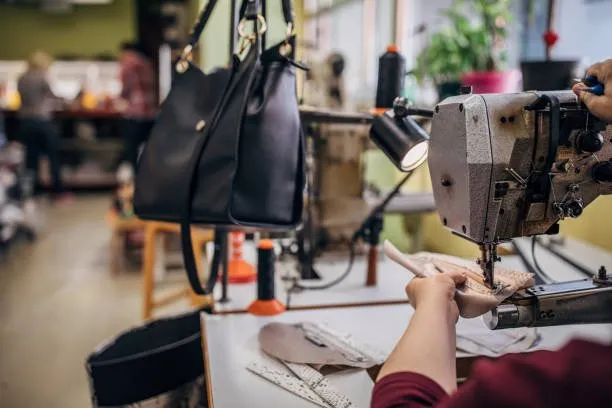
Quality Controversy in Factory Production (Consumer Misconceptions About “Handmade”)
1. Current State of Luxury Production: Coexistence of Sewing Machines and Artisans
Most international designer brand bags, including **Chanel** and **Louis Vuitton**, complete over 80% of their production processes in factories in Italy, France, or Spain. According to a 2022 undercover report by *BBC*, Hermès Birkin bag metal components are outsourced to German factories, leather cutting utilizes laser equipment, with only final assembly done manually by artisans.
2. Core of Quality Controversy: Machine Precision vs. Handmade Warmth
Consumers often mistakenly equate “**handmade**” with “entirely hand-stitched and hammered,” while actual production involves:
- Stitching precision relies on industrial sewing machines (error margin under 0.5mm)
- Hardware plating requires standardized chemical treatment processes
- Manual work focuses on decorative details (e.g., saddle-stitching, leather edge burnishing)
3. Cognitive Gap: Brands’ “Handmade Mythology”
Brands reinforce consumer misconceptions through three tactics:
- Promotional videos only show artisans hand-stamping logos
- Product descriptions use ambiguous terms like “hand-assembled”
- Factory “atelier experience zones” created for VIP tours
*The New York Times* exposed an Italian brand shipping China-made bags to its home country, where artisans manually attached metal clasps before labeling them “Made in Italy with artisan craftsmanship.”
4. Quality Reality: Factory Production ≠ Low Quality
Bain & Company’s 2021 data shows factories with **full-automated quality control systems** (e.g., Gucci’s Florence factory) have 47% lower defect rates than purely manual workshops. True quality determinants include:
- Leather batch screening standards (top brands reject 35% of materials)
- Metal component oxidation resistance tests (luxury-grade requires 72-hour salt spray testing)
- Stitch tension monitoring (machines detect force per stitch in real-time)
5. What Consumers Should Focus On
Instead of obsessing over “pure handmade,” prioritize verifying:
- Leather source ranch animal welfare certifications (e.g., RDS-certified down)
- Factory environmental ratings (EU Ecovadis Silver Rating or higher)
- Component replacement commitments in repair policies (some brands offer lifetime hardware replacements)
*The Wall Street Journal*’s 2023 durability test found **Coach**’s factory-produced tote bags showed 22% higher seam strength after 3 years of daily use compared to a handmade studio product.

How Brands Balance Efficiency and High-End Positioning
When Machines Meet Handcraft – Louis Vuitton’s Alternative Assembly Line
Foreigners have a misconception: luxury brands either use full handcrafting or full assembly lines. But Louis Vuitton’s current CEO Pietro Beccari revealed a bombshell in a Financial Times interview last year – their most expensive crocodile leather bags are indeed hand-stitched by French master artisans, while on the production line for basic Neverfull tote bags, robotic arms press 20 precise bag corners per minute.
Secrets Hidden in European Towns
Vogue Business visited LV’s workshop in Asnières-sur-Seine, France. The sewing machines there are custom-made in Germany, with stitch density adjustable to levels indistinguishable from hand-stitching by the naked eye. But the final three steps of each bag must be completed by workers, including using heat-pressed molds to create the classic monogram pattern – machines still cannot replicate the subtle expansion of leather when heated.
The Business Logic of Geographic Labels
According to data from the French Luxury Brands Association, LV produces 80% of basic styles in automated factories in Spain and Texas, USA, but maintains 12 handcraft workshops in the suburbs of Paris. A little-known fact: only bags produced in France can bear the “Made in France” stamp, while those made in Spain are labeled “Made in EU” – this detail creates a 23% price difference in the secondary market.
Anti-Counterfeit Tech as Quality Supervisor
WWD exposed LV’s quality control system: each metal component has a laser-engraved code, and assembly line workers must scan them with AR glasses. The system not only tracks production progress but also records the pressure and angles of workers’ operations – excessive force when pressing edges gets flagged as “damaging the leather’s natural texture,” sending such bags directly to destruction channels before quality inspection.
Alternative Playbook for Scarcity Marketing
Bernstein consulting firm research shows LV has shortened pre-order wait times for popular bags from 6 weeks to 3 weeks, but extended limited editions to half a year. Their new smart factory in Portugal can adjust production lines in real time – producing 500 extra basic styles today frees up three handcraft lines for limited editions tomorrow. This flexible supply chain reduced annual scrap rates from 15% to 4%, three times lower than industry averages.
